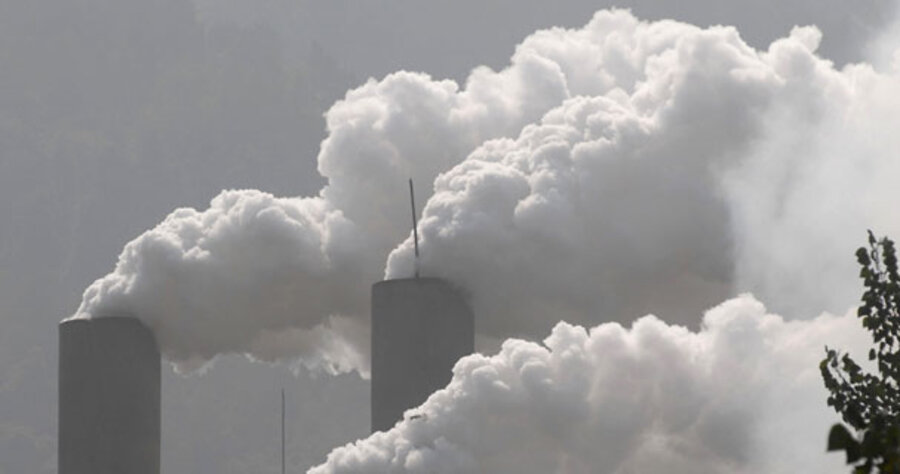Bangkok talks to set timetable on global-warming pact
Loading...
This week, negotiators from 163 countries dip their toes into poorly charted diplomatic waters as they prepare to craft a new agreement to fight global warming.
Meeting in Bangkok, Thailand, through Friday, negotiators aim to lay out a detailed negotiating timetable for a draft pact they can submit for approval in Copenhagen, Denmark, in December 2009. And unlike talks that led to the Kyoto Protocol in 1997, which applied only to developed countries, these talks must set some type of binding greenhouse-gas emissions objectives for developing countries as well.
More players are facing decisions that involve significant changes in long-established patterns of producing and using energy, of economic development, and of delivering economic and technological aid to the developing world
The task is daunting, acknowledges Yvo de Boer, executive secretary of the United Nations Framework Convention on Climate Change.
"We have less than two years to craft what may well be one of the most complex international agreements that history has ever seen," he says. "If we fail, we'll all be losers."
Setting a detailed schedule sounds a bit pedestrian, but he says negotiators can meet the challenge only if they organize effectively. "That's why this meeting in Bangkok is so critical," he says.
Indeed, the talks are following two tracks. Countries covered by the Kyoto Protocol are considering what comes next after the agreement's first enforcement period closes at the end of 2012. And everyone is taking part in setting the schedule for broader talks that will embrace countries that either haven't ratified the protocol or have ratified it but face no protocol commitments. Whether the two merge remains to be seen, some analysts say.
The talks begin against a backdrop of soaring greenhouse-gas emissions.
Earlier this month, economists at Stanford University in Palo Alto, Calif., projected that between 2004 and 2010, China's emissions will grow by 2.5 to 4 percent a year. China's challenge is compounded by its efforts to turn over energy decisions to its provinces, which have fewer incentives and less money to build coal-fired power plants that use the latest technology. More broadly, scientists tracking long-term changes in greenhouse-gas emissions found two years ago that between 2000 and 2005, emissions rose four times faster than they had during the previous 10 years. The growth coincides with the UN Intergovernmental Panel on Climate Change's emissions trend, which assumes that during this century, half of the energy the world needs will come from fossil fuels.
Meanwhile, buried in the footnotes of a broad negotiating road map that came out of the global climate talks in Bali last December, lie references to an emissions objective around which many countries hope to frame talks. If adopted, industrial countries would be required to reduce emissions from 25 to 40 percent below 1990 levels by 2020. That represents a benchmark along the path to stabilizing global emissions so that by century's end, global average temperature increases will be held to around 3.6 degrees F. Carbon dioxide, the key player in human-triggered warming, remains in the atmosphere for up to 200 years. Stabilization of atmospheric concentrations implies that emissions eventually must fall to virtually zero.
To help get there, developed countries are trying to find ways to bring the developing countries into an emissions-reduction scheme without undercutting their legitimate aspirations to reduce poverty and boost their standards of living. These include potential approaches such as giving developing countries credit for conserving tropical forests, allowing developing countries to set an initial emissions target for a specific industry or economic sector, or having them use carbon-intensity as an initial benchmark, rather than out-and-out emissions cuts.
A range of sticky issues will arise once a timetable is set. For instance, developing countries say they want to do more, but need real, measurable, verifiable financial and technical help from developed countries to meet the emissions commitments the developed world expects. China has proposed that developed countries earmark half a percent of their gross domestic product to help developing countries grow in a less-carbon-intense way, according to Elliot Diringer, director of international strategies for the Pew Center on Global Climate Change in Arlington, Va.
"That's a pretty big number, and you're not likely to see it happen," he says. But, he adds, it indicates developing countries are serious about assistance.
The issue comes up at the "micro" level, as well. Mr. De Boer cites a notion people have been mulling called "food miles." The value of carbon-dioxide emitted while transporting farm goods around the globe would be tacked on to the price people pay for them. The hope is to encourage people to buy grains, fruit, vegetables, and animal feed with the lowest transportation emissions: local or regional sources. Developing countries are wary of the idea, since it would make their agricultural products less competitive.
Observers say they sense in delegates meeting in Bangkok a clear willingness to tackle these issues. But in the end, the world may find itself settling for a warmer world than current emissions-reductions goals imply.
"There's a huge gap between what the scientists say is necessary" to hit the 2-degree mark "and what the political process can deliver," Mr. Diringer says. "The challenge is to narrow that gap," even if it isn't slammed shut.





